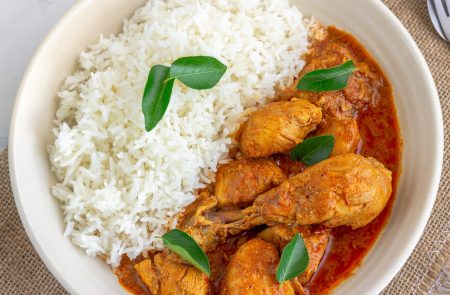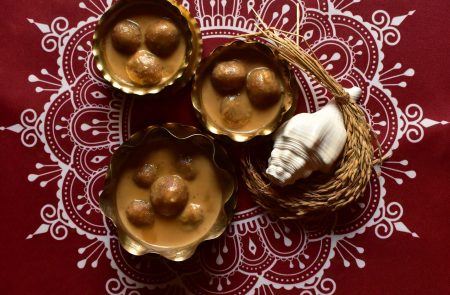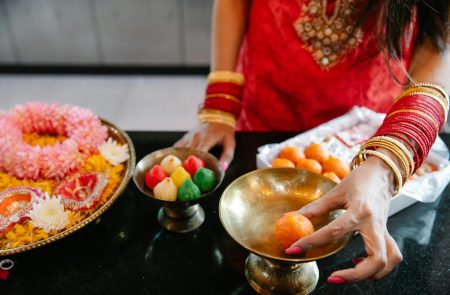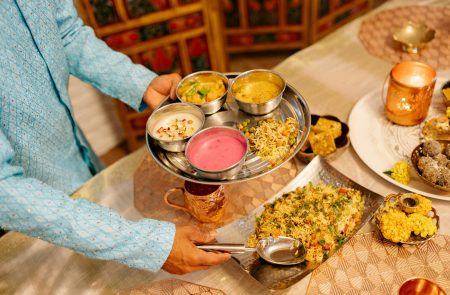Northern India cuisine
Several of the most well-known Indian dishes are also very common outside in Northern India. The region is renowned for its substantial dishes made with wheat, cheese, and veggies. Strong-flavored spices and ghee also known as clarified butter are the hallmarks of North India. Along with other breads, parathas and Naan accent Northern India’s thick, fiery curry.
One is well-known North Indian butter chicken. From Delhi, rich and creamy chicken. Usually accompanying are bread or rice. The creamy tomato based gravy in this meal tastes great and is warmed by the many spices. Celebrated for its spicy lamb cuisine, Kashmir is home to Rogan Josh. This recipe emphasises the rich red hue and subtle spices of this region. Northern India has some rather remarkable sweet and spicy cuisine.
The street cuisine available in Northern India is diverse. On street corners you may discover Samosas, Aloo Tikki, and Pani Puri. Every spoonful is delicious. “Chaat” is a term used to describe a range of sour, spicy, salted street food. If you visit the region, you should consume these treats alongside yoghurt, mint chutney, and tamarind sauce. North India cuisine mixes to produce great and unique meals.
Southern Indian Cuisine
Due to the fact that rice and coconut are the major ingredients, Southern India has a very diversified culinary experience. All the herbs, spices, and fresh vegetables make these dishes as famous Indian cuisines, they are incredibly good and light. They’re quite popular! You know, Northern Indian curry are all about that rich and creamy goodness, while Southern Indian cuisine tends to be lighter, really focussing on fresh ingredients and bold flavours. The southern food, particularly Dosa and Idli, is much-liked.
Popular breakfast from South India is dosa. Made with lentils and cooked rice, a thin, crispy pancake results. Usually accompanied by coconut or tomato chutneys and sambar, a sour lentil soup, it Popular are idli, chutneys, and sambar. Rice cake cooked steamed. Chettinad is Tamil Nadu’s cuisine. Those roasted spices that truly add the fire help Chettinad Chicken Curry to be bursting in taste. Southern Indian rice dishes like Biryani, paired with raita, demonstrate its versatility. They truly understand how to make your taste sensations joyful!
Food like Kerala Fish Curry taste unique and good. These dishes sour from tamarind and curry leaves. To complete a dinner, Southern Indians enjoy payasam, a mouthwatering rice or noodle dessert. Southern India has a diverse and harmonious cuisine because to the region’s long history and agricultural legacy.
Western Indian Cuisine
Western India is well-known for its varied cuisine; every state adds unique taste. Taste of sweet and savoury nature of Gujarati food is well recognised. Examples are Khandvi, thin rolls composed of gramme flour with ginger, green chillies, and spices and Dhokla, a steamed cake made from rice and chickpea flour. Worth attempting is the Gujarati Thali, a buffet of sweet, sour, fiery, and salted treats.
But Maharashtra has somewhat different preferences. Perfect is the lentil-and- sugar pancake called Puran Poli. Flavours deep in earthiness. Still another option is well-known Mumbai street food Vada Pav. With a fiery potato patty, a toast with chutneys and crispy fried green chillies. Methi Thepla (fenugreek flatbread) and Bombil Fry (Bombay Duck), a crispy and delectable appetiser, are only two of the seafood dishes available in Gujarat and Maharashtra’s coastal regions. Western India finds Goan Fish, a sour feast based on coconut that demonstrates how Portuguese cuisine affected Goan food.
Eastern Indian cuisine
Eastern India is a great blend with culinary roots in West Bengal and Assam, Eastern India. The Traditional Indian food cuisine calls for light and heavy fish, rice, and mustard oil. A regional staple is Bengali Machher Jhol, a mustard-based curry including fresh fish, potatoes, and tomatoes. Since it’s simple to prepare and tastes great, it’s Bengali home food. Two of the region’s well-known sweets are rasgulla and sandesh, made with fresh paneer (chhena) and sugar syrup. These little and light delicacies are ideal supper finishers.
Odisha provides a unique Eastern Indian cuisine with its concentration on traditional cuisines. Healthy and earthy lentil and vegetable stew dalma works great with steaming rice. The region creates Pakhala Bhata, fermented rice with fried vegetables, perfect for summer. Many Assam dishes are rice-based. Khaar, a rice-raw papaya stew, is a regional speciality. The mustard paste’s rich and unusual tastes make it a pleasure for northeastern food lovers.
Central Indian cuisine
Despite being usually ignored when it comes to food, Central India has some must-try Indian dishes that reflect the region’s simplicity and agrarian traditions. Bhutte Ka Kees, spiced and milk-cooked chopped maize, is delicious in Madhya Pradesh. The tastes are perfect. In this region, poha flattened rice, mustard seeds, curry leaves, and peanuts is a popular breakfast or snack. A nice change from other regions’ more complex cuisine, Central India’s plain yet tasty food is comfortable and healthy.
Chhattisgarh is another Central Indian cuisine powerhouse that uses neglected native staples like rice, lentils, and forest products. Chana Samosas go well with tea. A little deep-fried flatbread stuffed with beans, onions, and spices. Try Bafla, a wheat flour dough ball with ghee and dal, if you’re in the region. Central India’s modest, homely cuisine are equally as wonderful despite their lesser fame.
Conclusion
India’s food scene is just as diverse as its culture, and trying out different regional dishes will definitely leave you wanting more. Each part of India has its own special treats to offer. You’ve got the hearty and spicy dishes from the north, the coconut-rich curries from the south, the sweet and savoury flavours from the west, the delicate seafood from the east, and the rustic delights from central India. Indian food combines all of these aspects, and each dish has a family history. Explore regional Indian cuisine the next time you want to try something different. You won’t regret.







